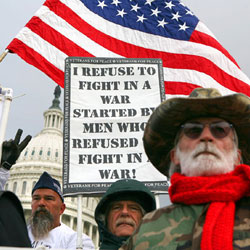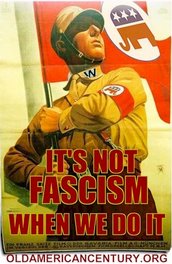I just had an ‘Aha!' Moment.
For the last decade or more I’ve believed every word the scientists said about Global Warming. After all, the politicians immediately came out swinging, smearing the scientists and declaring their findings ‘pseudo-science.’
I mean, who would you have believed?
But, I just watched a documentary I’d seen before—and, this time, I noticed something that had escaped me the first time around.
I had known for thirty years or more about the Little Ice Age that began around the year 1000. It ushered in such innovations as chimneys, multi-roomed dwellings with staircases [the gentry lived upstairs where it was warmer] tapestry-hung beds, buttons on clothing, rotation of crops, an increase in animal husbandry [and meat in the European diet] as a result of the mass failure of cereal crops while animal feed crops were better able to survive the cold, the end of growing grapes [and wine production] in England, etc. etc. etc.
The Black Death arrived about the same time and preyed on a population already weakened by the change in climate.
The European mindset became paranoid. Surely, the Almighty was calling on the populace to clean up its act. The Church and governments turned on Jews and women and the witch hunts and purges of the Jews brought about tens of thousands of violent deaths.
Across the Atlantic Ocean from Europe, the Vikings’ great experiment had been underway for several generations.
When they arrived, Greenland was a lush and green place—not the glacier-covered mass we’re all familiar with today. For the first century or so of the European settlement, the newcomers derived 80% of their sustenance from the land [goats, sheep and cereal crops] and 20% from the sea. After the Little Ice Age began, that ratio gradually reversed itself and the Vikings, who had never learned the winter-fishing techniques used to by the Inuits to tide them over during hard times, died out.
This is the history of the early Little Ice Age. The earth actually began that cycle at a considerably warmer climate than we see today.
xxx
The part I hadn’t put together before was the length of the cycle we’re dealing with, here.
The Little Ice Age didn’t last for two or three hundred years, as I’d always assumed. Its effects, in fact, were being felt when the Pilgrims arrived in the New World. They were still going on when George Washington crossed the Potomac in 1776. It brought about both Napoleon's failure in Russia and his downfall at Waterloo. In 1816, when Mary Shelley wrote Frankenstein, ice imagery abounded in the novel, reflecting conditions outside as she wrote. The Irish potato famine of the mid-nineteenth century was, to a large extent, due to long, wet winters and short summers.
According to the documentary, the Little Ice Age came to an abrupt end in 1850—possibly fueled, at least in part, by industrialization—though that is not an absolute. On the other hand, it may have begun its wane then and may be ending now.
The fact remains, though, that the earth has not even yet, by any means, warmed to the level it was when the cycle began in approximately the year 1000—when Greenland was actually green and England harvested grapes every summer as a matter of course. That climate had been stable for hundreds, maybe thousands, of years and its change took the populace by surprise then, too.
xxx
This is not to say that we aren’t faced with a possible crisis or even series of crises as a result of the warming we’re undergoing at the moment.
After all, with the polar ice caps growing for about a millennium and Greenland covered in ice for almost that long, we’ve been building on coasts that have been dry for less than that amount of time. Whole cities have grown up on land that was covered by ocean before the Little Ice Age locked up great quantities of water in glaciers and permafrost [I live in one of them].
We don't know what conditions were on the Great Plains prior to the Little Ice Age. Would the vast quantities of grain we plant there now have flourished there prior to the colder, wetter winters we see there now? We have no way of knowing. What will we do if the grain belt turns into a dust bowl? And, was that the norm 1000 years ago?
Likewise, what of sub-Saharan Africa? Today the desert is growing -- at least in part due to deforestation which is, certainly, because of human intervention. As long as the Little Ice Age ruled, the area was less volatile than it will be as the planet warms. As it dries even further, what will happen to that already strife-torn region?
Therefore, it would behoove us to keep the Little Ice Age that we’re currently living in stable—or face violent social upheavals as the climate returns to the level that may well be the actual ‘norm’ [assuming there is such a thing].
I guess my point is—if conditions that existed prior to the year 1000 were the norm—and we are currently living in a waning Little Ice Age which may, now, be drawing to a close—we may be fighting a losing battle as we attempt to stabilize the climate, no matter what we do.
After all, in a battle between us and Mother Nature—guess who’s gonna win?
Subscribe to:
Post Comments (Atom)

































No comments:
Post a Comment